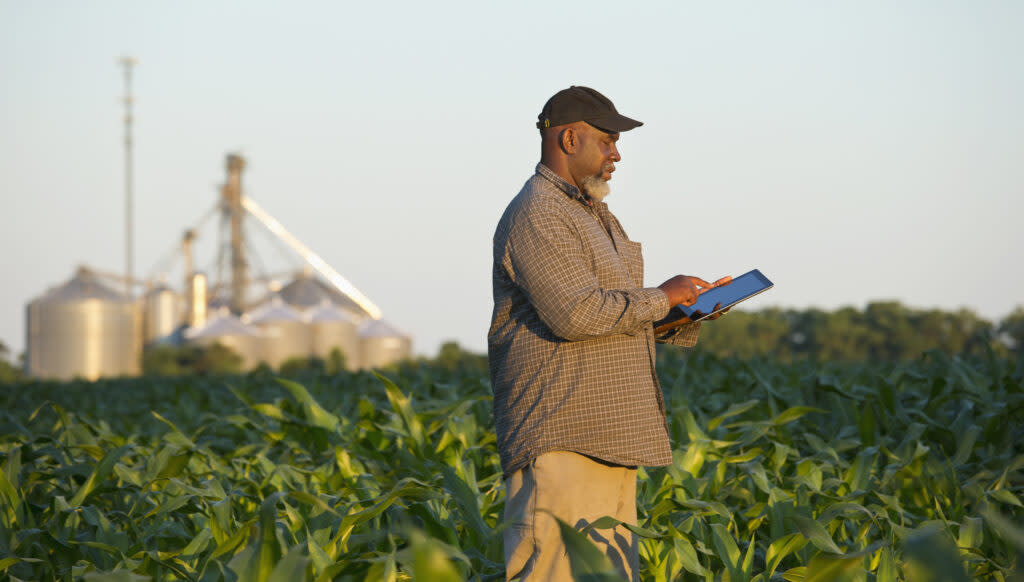APHIS Announced a Plan to Use Farm Bill Funding

APHIS Announced a Plan to Use Farm Bill Funding


APHIS Announced a Plan to Use Farm Bill Funding to Support Animal Disease Prevention and Management
The U.S. Department of Agriculture’s (USDA) Animal and Plant Health Inspection Service (APHIS) announced initial plans to carry out new animal health activities using resources provided by the 2018 Farm Bill. Section 12101 of the 2018 Farm Bill established a three-part program to comprehensively support animal disease prevention and management. The bill included funding to create two new programs:
• the National Animal Vaccine and Veterinary Countermeasures Bank (vaccine bank) and
• the National Animal Disease Preparedness and Response Program (NADPRP)
• It also expands funding opportunities for the existing National Animal Health Laboratory Network (NAHLN).
This fall, APHIS will issue a “sources sought notice” to gather updated information from vaccine manufacturers interested in supplying the vaccine bank. The information will be used to develop a forward-looking vaccine acquisition strategy leading to one or more requests for proposals for foot-and-mouth disease (FMD) vaccine to address a potential outbreak.
For 2019, APHIS will also make available up to $10 million in funding to be divided between NADPRP and NAHLN based on the quality of proposed projects. Once fully implemented, these three programs will work together to protect and improve the health of our nation’s livestock, helping farmers and ranchers provide high-quality agricultural products to consumers here and abroad.
For our highest consequence animal diseases, it is important to have an effective insurance policy in the extremely rare chance of an outbreak. The new U.S.-only vaccine bank—a concept APHIS officials have long discussed with stakeholders and industry—allows USDA to stockpile animal vaccine and related products to use in the event of an outbreak of foot-and-mouth disease or other high-impact foreign animal diseases. The USA’s most effective strategy to protect animal health is keeping disease out of the country in the first place. To that end, the new preparedness and response program, NADPRP, allows APHIS to enter into cooperative agreements with States, universities, livestock producer organizations, and other eligible entities for targeted projects aimed at preventing animal pests and diseases from entering the United States and reducing the spread and impact of potential disease incursions.
In 2019, APHIS funding will build upon and enhance current disease prevention and emergency response efforts by supporting an initial round of training and exercise projects, as stakeholders have long supported this area of importance. APHIS will announce the application period and dates of webinars to assist potential applicants through the process in a future message to stakeholders. APHIS will continue to develop a more formalized annual NADPRP stakeholder consultation and annual priority-setting process to be used for implementation in 2020 and beyond.
NAHLN is a nationally coordinated network and partnership of Federal, State, and university-associated animal health laboratories. NAHLN veterinary diagnostic laboratories provide animal health diagnostic testing to detect biological threats to the nation’s food animals, thus protecting animal health, public health, and the nation's food supply. Additional information about NAHLN is available on the APHIS NAHLN web site.
Note from M J Gilsdorf DVM: These funding requests will affect many federal, state, and private veterinarians within the US. Those working to prevent foreign animal diseases from entering the country; performing surveillance at markets, slaughter facilities, livestock fairs and shows, and on farms; and those issuing import permit, and conducting inspections of imported animals and animal products. Laboratory personnel and farm organizations will also be very interested in how the funding will be used. This will be a significant veterinary/animal health issue to follow over the next year.
